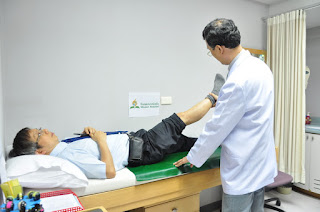Developmental Delays in Children With CP - Ages 4 to 5 Years
Cerebral Palsy is a one of a kind condition in that, despite the fact that its beginning regularly happens preceding, amid or not long after birth, the side effects may not be sufficient for a conclusion until the point when the kid is quite a while old and as of now in school. Somewhere in the range of 1500 preschool age youngsters get a determination of cerebral paralysis every year in the United States. Just 10 percent of these kids got their mind damage later than 1 month old from occasions, for example, physical mishandle, an auto crash, bacterial meningitis or newborn child stroke. Formative or social deferrals might be the aftereffect of different conditions, for example, extreme introvertedness, Asperger's Syndrome, or ADHD.
Cerebrum damage/harm happening whenever from baby to a couple of years old can bring about cerebral paralysis, a condition that debilitates the brains capacity to viably control muscles. A portion of the conditions known to cause cerebral paralysis include: untreated diseases in the mother, substance mishandle amid pregnancy, physical manhandle amid pregnancy, untimely births, absence of oxygen to the baby, breech birth and head wounds amid the birth procedure. Hindrances related with cerebral paralysis are typically identified with development and discourse, so gentle cases may not give diagnosable manifestations until some other time.
A normal 4-year old can remain on one foot, keep running all over stairs, toss and kick balls and jump on one or the two feet. Signs that an offspring of this age might encounter certain hindrances in the advancement of engine aptitudes can incorporate not having the capacity to toss a ball overhand, ride a tricycle, jot, hop set up, get a handle on composing utensils, stack at least 4 protests or duplicate a circle.
By age five, kids with formative impedances will most likely be unable to stack 6 to 8 objects, hold an illustration utensil serenely, brush teeth, duplicate straightforward geometric shapes, dress and disrobe themselves, utilize flatware, applaud to beat, turn somersaults, wash and dry themselves.
Another pointer, for an offspring of all ages, is whether they lose the capacity to fulfill an assignment they once could.
By government law (IDEA - Individuals with Disabilities Education Act of 2004) state funded schools must guide in the distinguishing proof, area and assessment of youngsters with handicaps. Youngsters, ages 3 to twelfth grade, are qualified for a specialized curriculum through their neighborhood school locale at no cost to the family.
Cerebrum damage/harm happening whenever from baby to a couple of years old can bring about cerebral paralysis, a condition that debilitates the brains capacity to viably control muscles. A portion of the conditions known to cause cerebral paralysis include: untreated diseases in the mother, substance mishandle amid pregnancy, physical manhandle amid pregnancy, untimely births, absence of oxygen to the baby, breech birth and head wounds amid the birth procedure. Hindrances related with cerebral paralysis are typically identified with development and discourse, so gentle cases may not give diagnosable manifestations until some other time.
A normal 4-year old can remain on one foot, keep running all over stairs, toss and kick balls and jump on one or the two feet. Signs that an offspring of this age might encounter certain hindrances in the advancement of engine aptitudes can incorporate not having the capacity to toss a ball overhand, ride a tricycle, jot, hop set up, get a handle on composing utensils, stack at least 4 protests or duplicate a circle.
By age five, kids with formative impedances will most likely be unable to stack 6 to 8 objects, hold an illustration utensil serenely, brush teeth, duplicate straightforward geometric shapes, dress and disrobe themselves, utilize flatware, applaud to beat, turn somersaults, wash and dry themselves.
Another pointer, for an offspring of all ages, is whether they lose the capacity to fulfill an assignment they once could.
By government law (IDEA - Individuals with Disabilities Education Act of 2004) state funded schools must guide in the distinguishing proof, area and assessment of youngsters with handicaps. Youngsters, ages 3 to twelfth grade, are qualified for a specialized curriculum through their neighborhood school locale at no cost to the family.





No comments